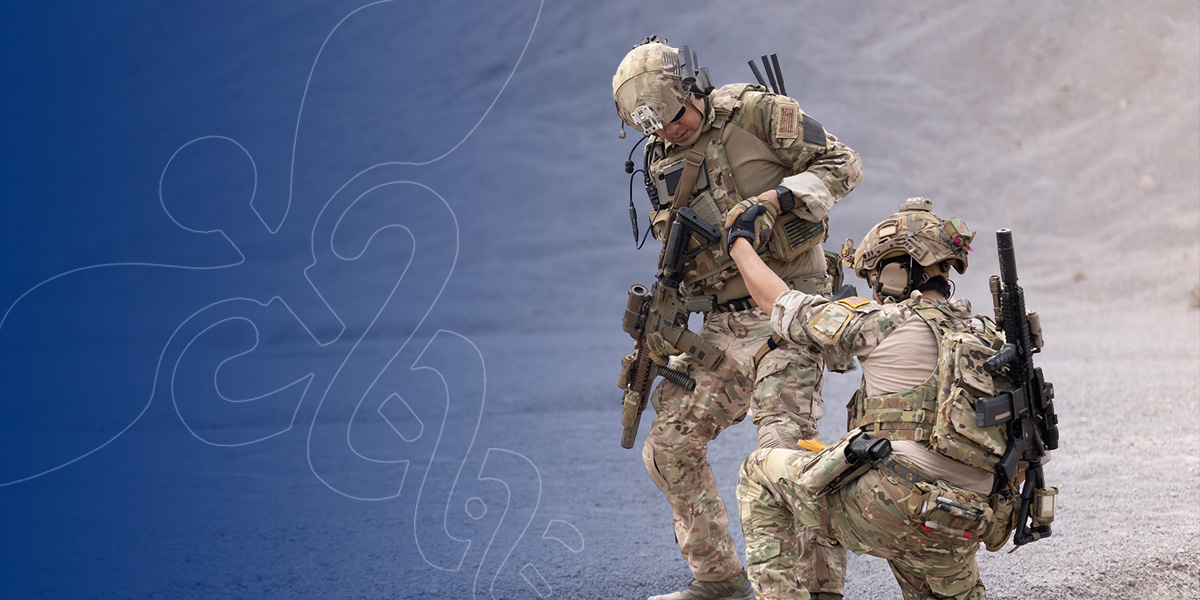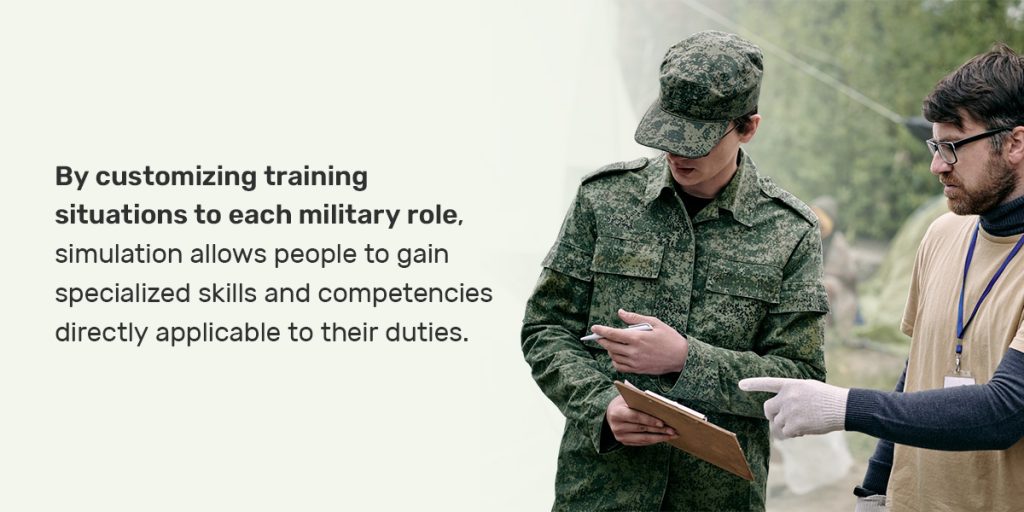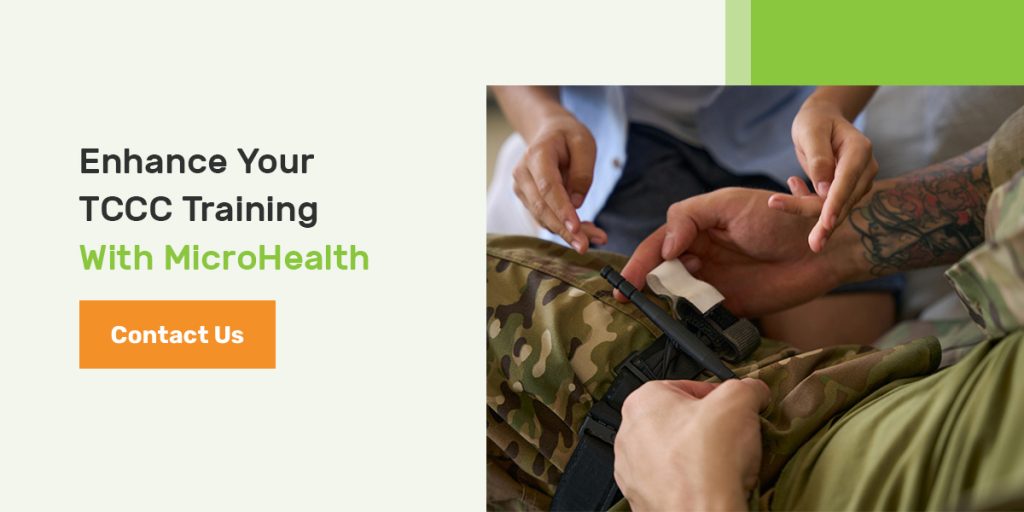
Demystifying Tier 0 Support: How AI and ML are Transforming the Help Desk Landscape
Tier 0 support is critical in the fast-changing world of customer service, as it allows customers to handle challenges autonomously …


Imagine being equipped with the skills to save lives even amidst chaos and danger. This is where tactical combat casualty care (TCCC) steps in. TCCC — combined with other items such as combat lifesaver, essential life support and combat medical advanced skills training — helps guide military medical professionals — as well as soldiers, sailors and airmen — in the most challenging environments.
How do we ensure our warriors are ready to face these critical situations confidently and competently? The answer lies in technology. Technological innovations usher us into a new era of medical simulation.
Our servicemen and women can hone their skills and refine their decision-making abilities through these simulated scenarios. It may also help them save more lives on the battlefield.
TCCC provides a systematic approach to treating injuries in intense combat scenarios. This approach prioritizes immediate attention to the most life-threatening injuries — such as hemorrhage control and airway management. These principles are crucial as they allow the delivery of vital emergency care until advanced medical support arrives.
TCCC closes the divide between injury and final medical care, improving soldiers’ chances of survival. Since its adoption, the U.S. military has seen higher casualty survival rates. TCCC is the accepted pre-hospital care across the Department of Defense (DOD). As such, TCCC enhances our armed forces’ performance and readiness by equipping them with the necessary trauma management knowledge and skills.
In essence, TCCC represents military medicine’s core values — adaptability, resilience and relentless pursuit of excellence. It’s quickly become a vital part of modern battlefield healthcare, saving lives and protecting our troops in extreme conditions.
Here are some reasons why simulation in TCCC training is beneficial:
Simulation in TCCC training provides a dynamic platform for trainees to engage in realistic, scenario-based learning. It immerses trainees in simulated combat environments with lifelike casualties and high-pressure situations. Medical training closely mirrors real-world scenarios, bridging the gap between theory and practice.
This hands-on approach enables participants to apply TCCC principles. It also helps them develop critical thinking, decision-making and problem-solving skills — all of which are vital for effective combat casualty care.
Army medical simulation helps with stress inoculation by exposing trainees to combat the stress and cognitive load of combat scenarios. This technique allows them to acclimate to the adrenaline, uncertainty and urgency of real-life situations. Ultimately, medical training prepares them to perform under pressure.
By managing stress in a controlled setting, trainees cultivate the mental fortitude and emotional resilience necessary for delivering lifesaving care in high-stress environments.
Effective teamwork is critical in providing casualty care in combat settings. Army medical simulation exercises enhance team coordination and communication skills, enabling trainees to practice collaborative efforts under duress.
Simulated scenarios requiring coordinated actions and clear communication help refine their ability to work as a cohesive unit. As a result, it helps ensure timely and comprehensive care for casualties during critical moments.

Personnel roles and tasks in military operations vary according to expertise and deployment. To address this diversity, personalized training for specific military jobs is vital to ensure members of the armed forces are equipped with the skills and knowledge needed for effective duty performance before ever being deployed.
Simulation tech allows educators to generate scenarios resembling real challenges across different military roles. For instance, medics may need training in surgical procedures, while combat soldiers, sailors and airmen must focus on emergency lifesaving tactics and casualty evacuation.
By customizing training situations to each military role, simulation allows people to gain specialized skills and competencies directly applicable to their duties. This helps improve individual competency and team efficiency by ensuring members are well-prepared to fulfill their jobs.
Role-specific training promotes team cohesion and collaboration by improving understanding of each member’s capabilities and responsibilities. This shared knowledge can boost teamwork and coordination in high-stress situations, thus improving military operations’ effectiveness.
Every member of a deployed team should be familiar with basic lifesaving and TCCC principles and techniques — not just the medics. Here are several reasons why:
First responder capability: In a combat environment, immediate medical care is lifesaving. If every soldier is trained in TCCC, they can provide critical care to wounded comrades while awaiting the arrival of medics or other medical personnel.
Situational awareness: Soldiers are often the first to encounter casualties in a combat setting. A basic understanding of TCCC allows them to assess and respond to injuries promptly and effectively. A quick response can make a difference for the injured individual.
Team resilience: In high-stress situations, having multiple soldiers trained in TCCC improves the unit’s resilience. If a medic or other designated medical personnel are injured, others can step in to provide care and support until additional help arrives.
Rapid response: Training every soldier in TCCC enables a faster response to casualties. Multiple individuals within a unit can provide immediate care without waiting for dedicated medical support.
Comprehensive unit readiness: By equipping all soldiers with TCCC knowledge, units can enhance their readiness and effectiveness. If each member is prepared, they can contribute to the unit’s medical capabilities.
Providing TCCC training to every soldier enhances the unit’s collective ability to respond to injuries and medical emergencies in combat environments. As a result, TCCC training may improve wounded personnel’s chances of survival and recovery.
MicroHealth excels in developing cutting-edge medical simulation technologies tailored for military training across diverse operational environments. As a veteran-owned, service-disabled, SBA 8(a) small business, we recognize the pivotal role of technology in combat casualty care and readiness.
Through our technology, we have facilitated realistic and immersive training experiences for military personnel. Our solutions allow them to hone their skills and decision-making abilities in a safe and controlled environment. We take great pride in blending innovative technology with battle-tested insights.
Let’s discuss some key solutions that MicroHealth can offer.
MicroHealth supports 25 MSTCs with comprehensive technology updates, optimizing training for over 2,500 soldiers annually. Our integrated systems stimulate high-stress scenarios, which are crucial for honing lifesaving skills such as combat lifesaver and TCCC.
Collaborating with the Army, we developed a prototype specifically for prolonged field care to address the unique needs of special operations forces. Our command-and-control software suite allows instructors to manipulate environmental stressors during training scenarios. These features help to enhance realism and effectiveness.
Our portable solution offers a scalable, cost-effective alternative to fixed facilities. Designed for military, police, fire and rescue and disaster response teams, it adapts to diverse training needs and environments. Its flexibility helps to ensure readiness in dynamic settings.
Our solutions integrate state-of-the-art technology with battle-tested insights, empowering military personnel to handle real-world medical challenges confidently. We prioritize realism and effectiveness to ensure every training session maximizes skill development and operational readiness.

Adopting advanced simulation technologies bridges the gap between theoretical knowledge and practical skills. By embracing TCCC technology, military personnel may improve their preparedness and efficiency in managing battlefield medical scenarios.
Contact MicroHealth online to modernize TCCC training and improve battlefield medicine through simulation. Provide your team with the tools and experience to excel in tactical combat casualty care.
John T. Hayden III, a retired U.S. Army Master Sergeant, serves as a Medical Training and Simulation Deputy Program Manager at MicroHealth. His diverse background includes over nine years in Defense Acquisition with the Program Executive Office for Simulation, Training, and Instrumentation, and over 22 years of military service. John brings unparalleled expertise in training and mission management of both conventional and Special Operations Forces. His 14-year Special Forces Medic (MOS 18D) tenure has given him knowledge and skills in conventional and Special Operations medical practices.